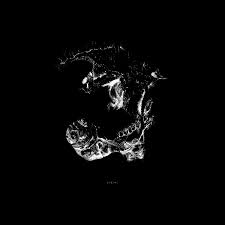I still remember the first time I heard the sounds of juke and footwork. The experience was as exhilarating as it was jarring. The music seemed wholly radical, an alien collection of off-angled samples that appeared to jut from no one particular branch of dance music. The sensation was pungent, sharp. The way I imagine it must have felt to hear Fear Of A Black Planet in 1990, or Acid Tracks in ’87. At the time, it seemed every bit as pioneering. Like others, my excitement has since leveled off, and yet that initial pang of shock has yet to fully subside.
My initial experiences with Death After Life were not entirely dissimilar from this, though, admittedly, the impression was, and remains, far more vague. However, the precise reasons why these tracks leave such an impression are much more subtle, much less obvious.
Thug Entrancer is Ryan McRyhew, a Denver-based producer who used a stint in Chicago as a springboard to reimagine and coalesce various strains of dance music. That is, on Death After Life, McRyhew rearranges the components of house, footwork, techno, acid, et al. to build a subtly progressive, yet conventionally rewarding collection of dance tracks. The album is an aesthetic elbow, a vertex where traditional frameworks and IDM forays intersect—left-field intuitions combed by artful restraint. In fact, Death After Life‘s allure hinges on this juxtaposition, a measured push-and-pull between curiosity and functionalism.
‘Death After Life I’ (there are eight chapters in all) opens with woozy, playful synth-work – both pillowy and icy – that proceeds to swell and recede like images moving in and out of focus. Hi-hats, muffled toms, claps and skittering snares contribute to the frigid mix, warmed just slightly by a fogged-out bass tone. These stark monochromes plot the spectrum for all of Death After Life, an album of few musical elements, driven, instead, by timbre, motion and mood.
‘Death After Life II’ introduces the languid, avant face of Death After Life. A dreamlike drift of dub-plate clicks and bubbling mercury – underpinned by rumbling bass (think Massive Attack’s ‘Angel’ deconstructed) and echo trails – descends into a slow-motion drill n’ bass number. This carefully measured experimentation exhibits McRyhew’s penchant for lateral, not bottom-up, innovation. As far as references go, ‘Death After Life III’ is the album’s most explicit ode; throbbing linearity meets gurgling, liquid-metal Roland 303 squelches and reverbed claps. This is acid house locked in innerspace. Not one to placate his listeners, McRyhew squashes all hope of blissing-out by closing the track with a toothy, aurally excruciating wash of noise.
Redolent of early electronic music’s flirtations with dance-pop (Klaus Schulze goes techno?), ‘Death After Life IV’ and ‘VI’ are glassy, atmospheric and comparatively abstract. It’s with moments like these that Thug Entrancer’s slot in Lopatin’s Software label begins to make sense. Like labelmates Huerco S. and Sculpture, McRyhew has an affinity for art-bent dance arrangements, taking techno’s mechanistic march and blanketing it with pixilated colourings and odd fragmentations. However, while these artists work primarily with texture and conceptual complexity, Thug Entrancer deals in negative-space, cleaning and cleaving till each sound is marbled and sparse. McRyhew’s compositions are clinical and willfully transparent, with each tone nestled in dry, staccato blacks.
The feverish ‘Death After Life V’ – a swirl of spiraling synths and percussive eddies –- and the sprightly ‘Death After Life VII’ reveal yet another side to the album, serving to remind the listener that McRyhew is concerned with building landscapes, not perpetuating them. The latter cut is especially fascinating, containing strange analog effects (reminiscent of the Cannibal Holocaust theme) and a campy abundance of handclaps. On closer ‘Death After Life VIII’, McRyhew sculpts a mutant-footwork figure – introverted, forked, and whimsical – that marries the post-human utility of juke to the armchair inclinations of ambient dance.
Death After Life is an aesthetic paradox of sorts, where melodic courses are subject to stylistically absurd contortions. The resulting music is surreal, in that familiar structures are stretched to illogical extremes. The tone throughout is one of trial-and-error, possibly improvisation, a sense that the floor beneath everything could give way at any moment. While the record as a whole rewards revisit, the excitement concerning its many idiosyncrasies inevitably levels off. And yet, that initial pang of shock never fully subsides.


